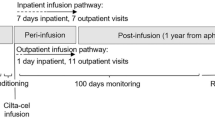Abstract
The existence of malignant stem cells has been proven for hematopoietic disorder as well as some solid tumors. Although significant improvements in cancer therapy have been made, tumor recurrence is frequent and can partly be due to the absence of therapeutic target which tumor stem cells are regarded as. In this paper we shall explore different therapeutic scenarios for successful tumor treatment by using a predictive mathematical model based on the cell compartment method. In particular, we shall study the effects of the chemotherapeutic target rate and of the interval of G-CSF administration on therapy for myeloid malignancies through simulating chemotherapy with G-CSF (granulocyte colony-stimulating factor) support. The results indicate that if target rate is raised to an enough high value, the efficiency of chemotherapy increases so greatly that the tumor mature cells perish completely and normal mature cells are maintained at a normal level. Furthermore, the administration of G-CSF can increase the amount of the normal mature cells to a normal level. However, too long interval of G-CSF administration is demonstrated not propitious to patients’ healing. These results indicate that the simulations may be an effective approach to help designing therapeutic scenarios for successful tumor treatment by chemotherapy.






Similar content being viewed by others
References
Reya T, Morrison SJ, Clarke MF, Weissman IL (2001) Stem cells, cancer, and cancer stem cells. Nature 414:105–111
Abkowitz JL, Persik MT, Shelton GH, Ott RL, Kiklevich JV, Catlin SN, Guttorp P (1995) Behavior of hematopoietic stem cells in a large animal. Proc Natl Acad Sci U S A 92:2031–2035
Nowak MA, Michor F, Iwasa Y (2003) The linear process of somatic evolution. Proc Natl Acad Sci U S A 100:14966–14969
Hanahan D, Weinberg RA (2000) The hallmarks of cancer. Cell 100:57–70
Hope KJ, Jin L, Dick JE (2004) Acute myeloid leukemia originates from a hierarchy of leukemic stem cell classes that differ in self-renewal capacity. Nat Immunol 5:738–743
Molofsky AV, Pardal R, Iwashita T, Park IK, Clarke MF, Morrison SJ (2003) Bmi-1 dependence distinguishes neural stem cell self-renewal from progenitor proliferation. Nature 425:962–967
Polakis P (2000) Wnt signaling and cancer. Genes Dev 14:1837–1851
Armitage P, Doll R (1954) The age distribution of cancer and a multi-stage theory of carcinogenesis. Br J Cancer 8:1–12
Michor F, Hughes TP, Iwasa Y, Branford S, Shah NP, Sawyers CL, Nowak MA (2005) Dynamics of chronic myeloid leukaemia. Nature 435:1267–1270
Komarova NL, Wodarz D (2005) Drug resistance in cancer: principles of emergence and prevention. Proc Natl Acad Sci U S A 102:9714–9719
Bernard S, Belair J, Mackey MC (2004) Bifurcations in a white-blood-cell production model. C R Biol 327:201–210
Pujo-Menjouet L, Mackey MC (2004) Contribution to the study of periodic chronic myelogenous leukemia. C R Biol 327:235–244
Colijn C, Mackey MC (2005) A mathematical model of hematopoiesis—I. Periodic chronic myelogenous leukemia. J Theor Biol 237:117–132
Catlin SN, Guttorp P, Abkowitz JL (2005) The kinetics of clonal dominance in myeloproliferative disorders. Blood 106:2688–2692
Engel C, Scholz M, Loeffler M (2004) A computational model of human granulopoiesis to simulate the hematotoxic effects of multicycle polychemotherapy. Blood 104:2323–2331
Ostby I, Kvalheim G, Rusten LS, Grottum P (2004) Mathematical modeling of granulocyte reconstitution after high-dose chemotherapy with stem cell support: effect of post-transplant G-CSF treatment. J Theor Biol 231:69–83
Wichmann HE, Loeffler M (1985) Mathematical modeling of cell proliferation: stem cell regulation in hemopoiesis. CRC Press, Boca Raton, Fla
Ganguly R, Puri IK (2006) Mathematical model for the cancer stem cell hypothesis. Cell Prolif 39:3–14
Scholz M, Engel C, Loeffler M (2005) Modelling human granulopoiesis under poly-chemotherapy with G-CSF support. J Math Biol 50:397–439
Dontu G, Al-Hajj M, Abdallah WA, Clarke MF, Wicha MS (2003) Stem cells in normal breast development and breast cancer. Cell Proliferation 36:59–72
Brown MD, Gilmore PE, Hart CA, Samuel JD, Ramani VA, George NJ, Clarke NW (2007) Characterization of benign and malignant prostate epithelial Hoechst 33342 side populations. Prostate 67:1384–1396
Alison MR (2005) Liver stem cells: implications for hepatocarcinogenesis. Stem Cell Rev 1:253–260
Warner JK, Wang JC, Hope KJ, Jin L, Dick JE (2004) Concepts of human leukemic development. Oncogene 23:7164–7177
Clarke MF (2004) Neurobiology: At the root of brain cancer. Nature 432:281–282
Huang S, Terstappen LW (1994) Formation of haematopoietic microenvironment and haematopoietic stem cells from single human bone marrow stem cells. Nature 368:664
Armitage P, Doll R (1957) A two-stage theory of carcinogenesis in relation to the age distribution of human cancer. Br J Cancer 11:161–169
Michor F, Iwasa Y, Nowak MA (2004) Dynamics of cancer progression. Nat Rev Cancer 4:197–205
Dick JE (2003) Breast cancer stem cells revealed. Proc Natl Acad Sci U S A 100:3547–3549
Huang S, Terstappen LW (1992) Formation of haematopoietic microenvironment and haematopoietic stem cells from single human bone marrow stem cells. Nature 360:745–749
Huang S, Law P, Francis K, Palsson BO, Ho AD (1999) Symmetry of initial cell divisions among primitive hematopoietic progenitors is independent of ontogenic age and regulatory molecules. Blood 94:2595–2604
Acknowledgement
This work was supported by the National Natural Science Foundation of China under Grant No.30970558 and No.11074084.
Author information
Authors and Affiliations
Corresponding authors
Rights and permissions
About this article
Cite this article
Wu, D., Li, H., Du, W. et al. Mathematical Modeling of Therapeutic Strategies for Myeloid Malignancies. Pathol. Oncol. Res. 18, 939–947 (2012). https://doi.org/10.1007/s12253-012-9524-x
Published:
Issue Date:
DOI: https://doi.org/10.1007/s12253-012-9524-x




